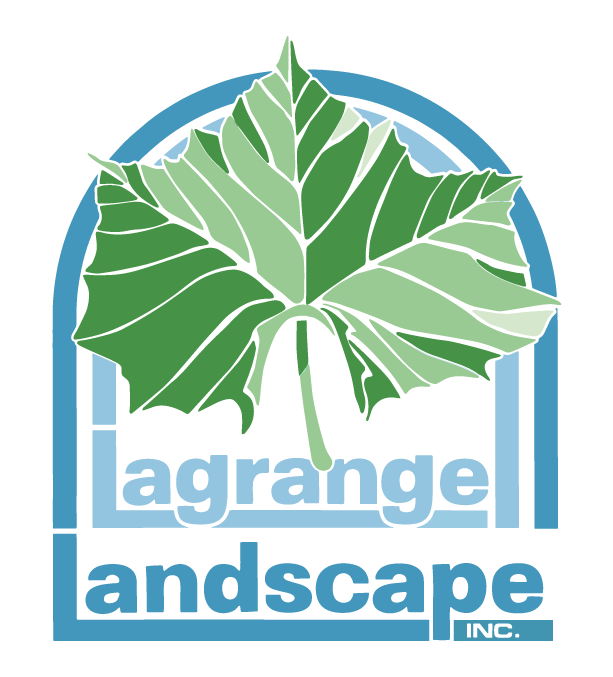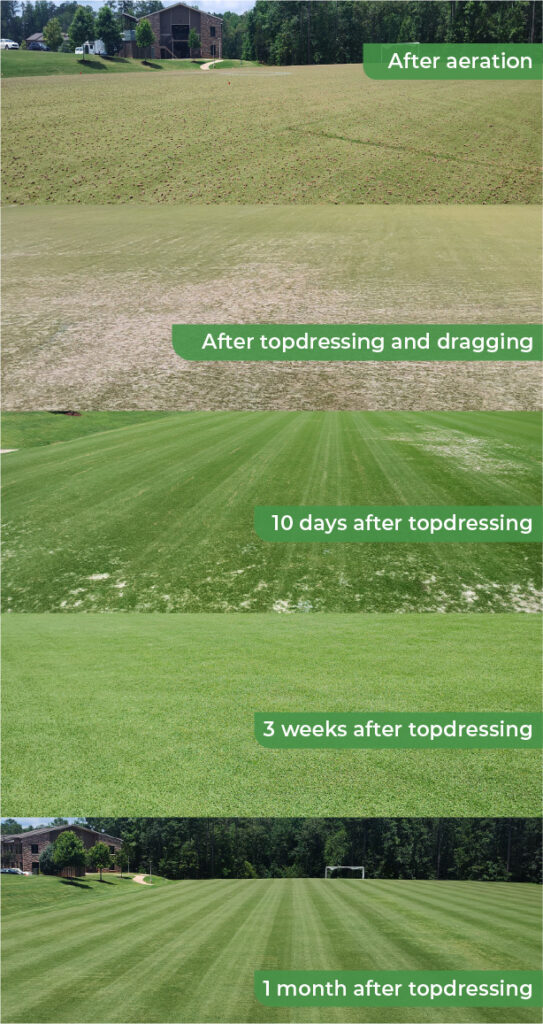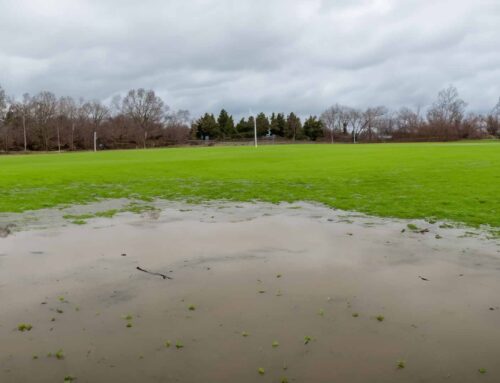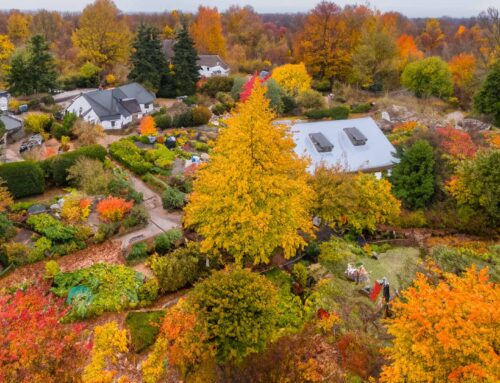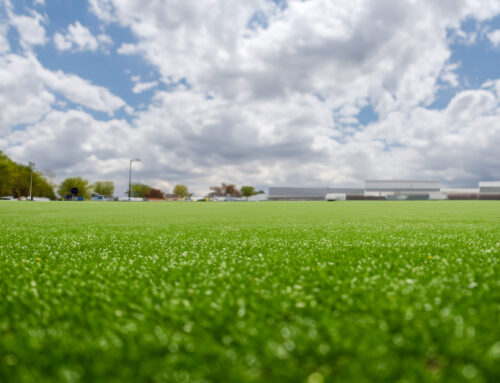Essential Practice for Top-Performing Athletic Fields: Aeration
In the world of athletic field maintenance, achieving optimal playing conditions is not just a goal but a necessity. Sports facility managers understand the importance of providing safe and high-quality playing surfaces for their student-athletes. In this article, we’ll delve into why aeration is essential for top-performing athletic fields. We’ll explore its significance for field health, injury prevention, and drainage optimization, offering insights and practical tips for athletic directors looking to enhance the playing surfaces on their athletic fields.
Understanding the Importance of Aeration
Aeration is the process of opening up the soil with small holes or slits to allow air, water, and nutrients to more easily reach the grass roots. This simple yet effective practice is essential for maintaining the health and vitality of athletic fields. Here’s why:
- Relieves compaction: Over time, soil compaction occurs due to heavy foot traffic and machinery usage on athletic fields. Compacted soil restricts root growth and water infiltration, leading to reduced nutrient uptake. Aeration alleviates compaction, promoting healthier root development and overall turf vigor, as well as softening the feel of the playing surface.
- Improved Air Exchange: Beneficial microbes in the soil require oxygen to survive. Compacted soil limits the movement of air within the root zone, suffocating the beneficial microbes that help with nutrient uptake, thus weakening the turf. By creating channels for air exchange, aeration ensures these microbes receive an adequate supply of oxygen, promoting stronger, more resilient turf.
- Enhanced Water Absorption: Proper water management is essential for athletic fields, especially during the summer. Compacted soil hinders water absorption, resulting in surface runoff, puddling, and waterlogged conditions. Aeration improves water infiltration, allowing moisture to penetrate deeper into the soil and promoting more uniform distribution throughout the root zone.
- Prevention of Excessive Thatch Build-Up: Thatch, a layer of decomposing grass and organic debris that accumulates at the soil surface, occurs naturally and can be beneficial to the turf as long as it is kept below ½ inch thick. Aeration helps keep the thatch in acceptable range by improving the necessary conditions for optimal microbial activity. When combined with topdressing the thatch is controlled even better, since topdressing helps improve the structure of the thatch.
Types of Aeration:
- Core or Hollow Tine Aeration: Core aeration, or aerification, is a process that uses a hollow tine that pulls plugs or cores from the ground. Early summer is the optimal time to perform core aerations since the process requires the most recovery time for the turf. Heavier topdressing usually accompanies core aeration since it is the best aeration for changing your soil structure.
- Solid Tine Aeration: Solid tine aeration uses the tines to push holes into the ground as opposed to removing soil from the ground. This aeration is preferable when the soil structure is good, compaction is not deep, or if reseeding. It also tends to tear up more of the ground and requires longer recovery so early summer is the optimal time.
- Slit or Knife Aeration: Slit Aeration uses blades or knife tines to slice the top few inches of the ground. This aeration can be used with a light topdressing or on its own and is perfect for late summer aerations to help the ground get extra air and water without adding excessive stress to the turf. Recovery is much quicker than other aerations.
- Deep Tine Aeration: Deep tine aeration uses longer tines to punch deeper into the ground (usually 8-to-11-inch depth) and gives the deepest compaction relief. This aeration uses specialized aerators and takes longer but gives some of the best results due to the depth of the holes. Recovery time varies on the size and type of tine used.
Here’s a brief infographic illustrating the different types of aeration:
The Ideal Timing: Early-Summer Aeration in LaGrange
Timing is crucial when it comes to aeration, and early summer presents an opportune window for this essential maintenance practice in LaGrange. Here’s why:
- Optimal Growth Conditions: The warm days and cooler evenings of early summer allows for vigorous growth for warm-season grasses, such as Bermuda grass and Zoysia grass, with less stressful conditions than those typically seen later in the summer. By scheduling more aggressive aerating during this time, turf recovery is expedited, allowing the grass to quickly fill in the aerated holes and establish a denser, more resilient turf canopy.
- Mitigation of Summer Stress: Summers in the South can subject athletic fields to increased stress, including heat stress and drought stress. Aeration helps alleviate stress by improving soil moisture retention and promoting deeper root growth, enhancing the turf’s ability to withstand environmental pressures.
- Preparation for High-Use Periods: With school sports seasons often in full swing during the fall and spring when warm season grasses are not growing as quickly, preparing athletic fields in advance is paramount. Early-summer aeration sets the stage for optimal field performance during peak usage periods, reducing the risk of compaction-related issues and ensuring a safe and playable surface for athletes.
The Benefits Of Aeration: Enhancing Soil Health And Plant Growth (Infographic)
Free Athletic Field Assessment: Identifying Specific Aeration Needs
At LaGrange Landscape and Maintenance, we understand the unique requirements of athletic fields and are committed to helping athletic directors achieve their maintenance goals. As part of our dedication to excellence, we offer complimentary athletic field assessments to identify specific aeration needs and develop customized maintenance plans tailored to each facility’s requirements.
Our experienced team utilizes state-of-the-art equipment and industry-best practices to assess soil conditions, identify compaction issues, and recommend appropriate aeration strategies. Whether your field requires core aeration, solid tine aeration, or a combination of techniques, we’ll work closely with you to ensure optimal results and long-term turf health.
Case Study: After Aeration & Top Dressing
Conclusion
In the realm of sports field landscaping services and maintenance, aeration emerges as an essential practice for achieving top performance. By understanding the importance of aeration for field health, injury prevention, and drainage optimization, athletic directors can elevate the quality of their facilities and provide a safer and more enjoyable experience for their student-athletes.
With lower field usage and optimal growing conditions, now is the perfect opportunity for athletic directors to prioritize this essential maintenance practice. By partnering with LaGrange Landscape and Maintenance and taking advantage of our complimentary athletic field assessment, you can ensure that your fields remain in peak condition year-round, ready to meet the demands of your athletes and the expectations of your community.
